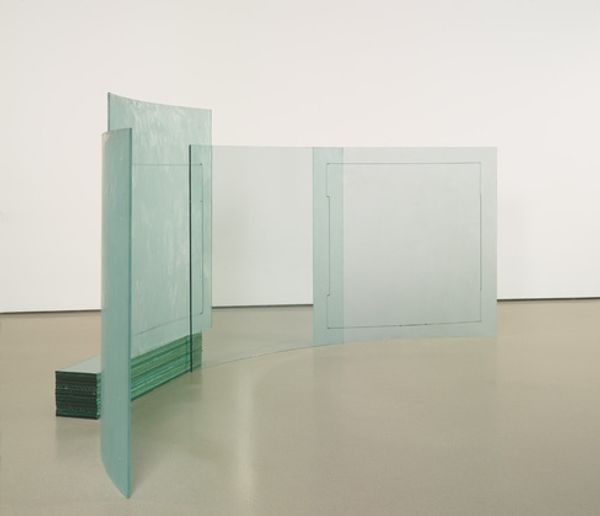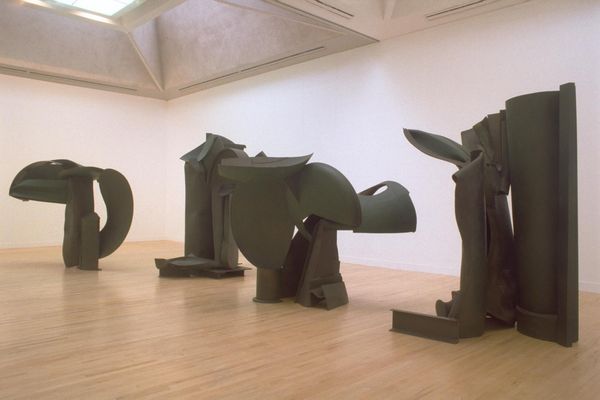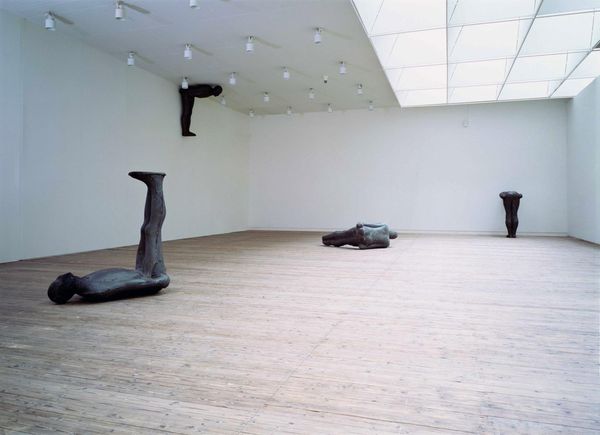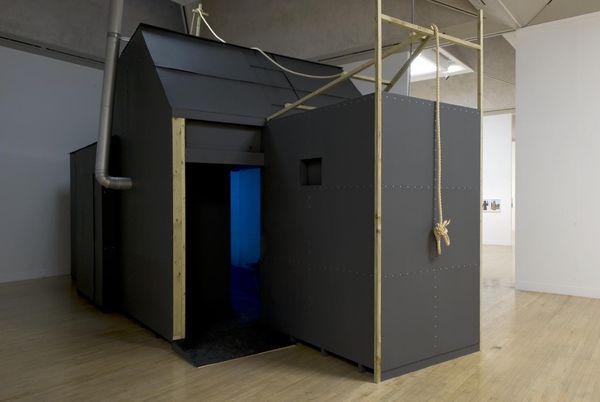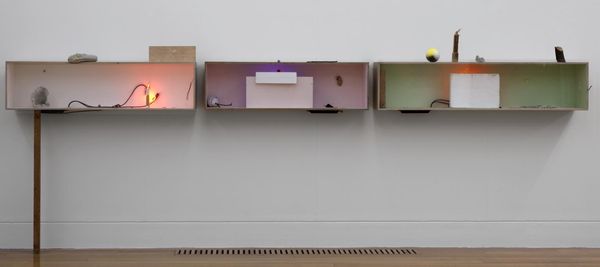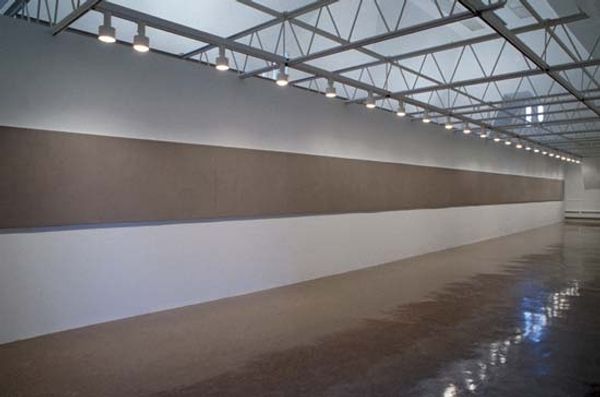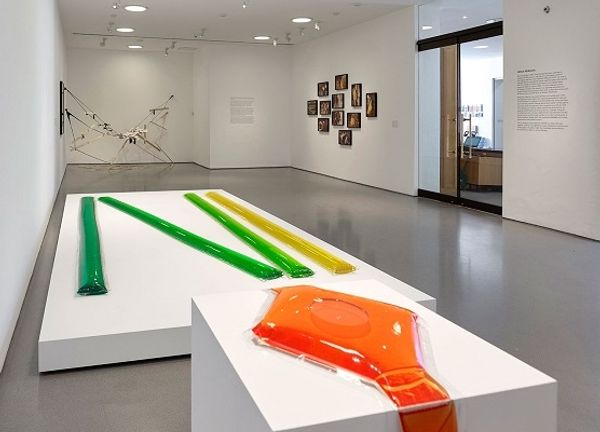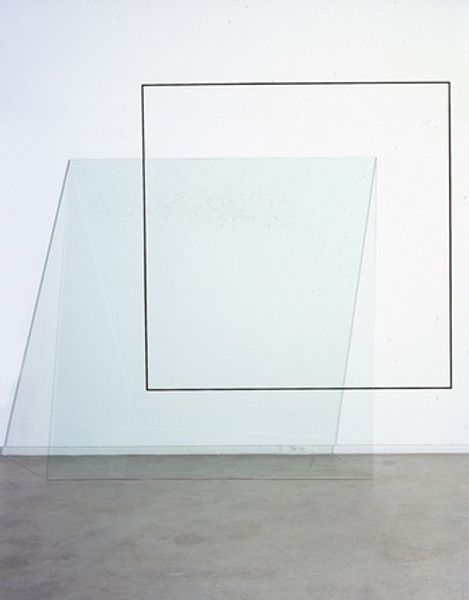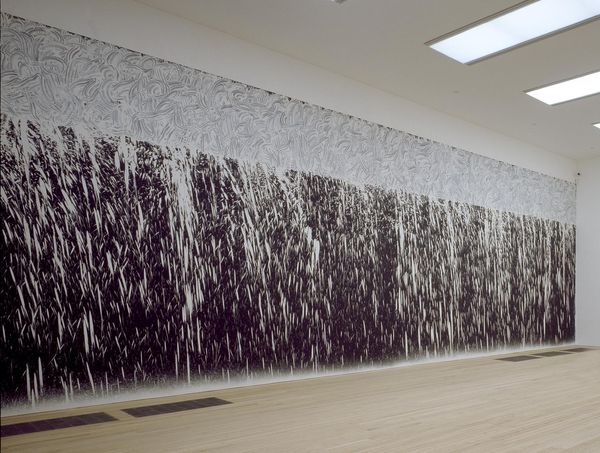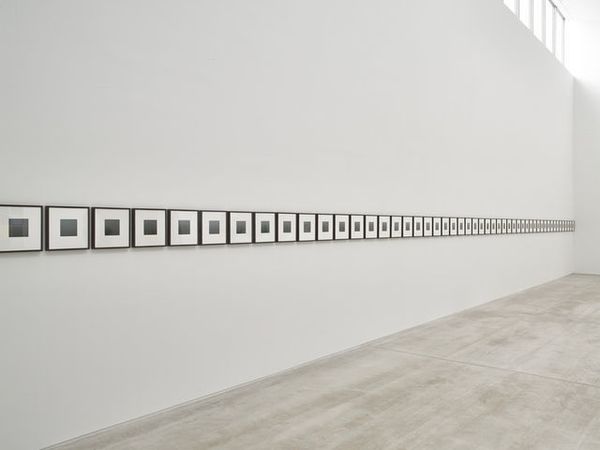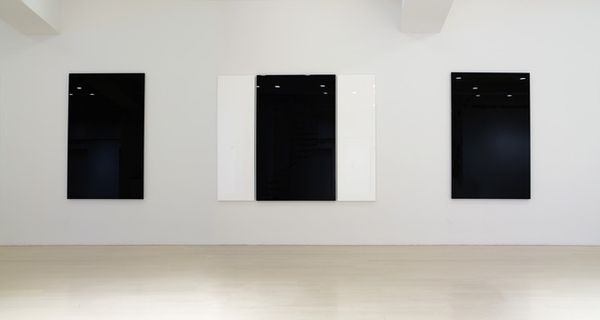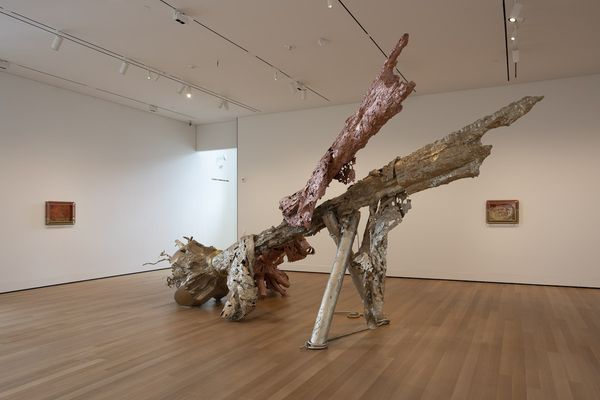
Dimensions: 2 parts: 2086 x 3225 x 1092 mm, 2086 x 3225 x 1092 mm 2 parts: 1136 x 1689 x 622 mm, 1136 x 1689 x 622 mm Weight installed: approx 15,750 kg Weight of eachcow half in transit tank 2940 kg
Copyright: © Damien Hirst and Science Ltd. | CC-BY-NC-ND 4.0 DEED, Photo: Tate
Editor: Here we have Damien Hirst's "Mother and Child (Divided)," of cows in formaldehyde. The separation is visually striking, creating a sense of… clinical detachment, maybe? What symbols do you see at play here? Curator: The cow, a potent symbol, signifies nurture and life. Here, bisected and preserved, it reflects a contemporary anxiety about the fragility of these concepts. Consider the cultural memory of the Madonna and Child – how does Hirst challenge and invert that iconography? Editor: It’s definitely provocative. The blue-green of the formaldehyde has a certain…unnatural feel? Curator: Precisely. That color, against the maternal symbol, provokes unease. Does the division of the animals reflect a deeper cultural division or a personal psychological separation? Editor: I never thought about it that way, but I can see how these symbols tap into something primal. Curator: Indeed. Hirst uses potent imagery to explore our complex relationship with life, death, and the symbols we assign them.
Comments
tate 6 months ago
⋮
http://www.tate.org.uk/art/artworks/hirst-mother-and-child-divided-t12751
Join the conversation
Join millions of artists and users on Artera today and experience the ultimate creative platform.
tate 6 months ago
⋮
Mother and Child Divided is a floor-based sculpture comprising four glass-walled tanks, containing the two halves of a cow and calf, each bisected and preserved in formaldehyde solution. The tanks are installed in pairs, the two halves of the calf in front of the two halves of the mother, with sufficient space between each pair that a visitor may walk between them and view the animals’ insides. Thick white frames surround and support the tanks, setting in brilliant relief the transparent turquoise of the formaldehyde solution in which the carcasses are immersed. The sculpture was created for exhibition at the 1993 Venice Biennale and was subsequently the focal point of the 1995 Turner Prize at Tate Britain (then The Tate Gallery), the year that Hirst won the prize. It is now in the collection of the Astrup Fernley Museum of Modern Art, Oslo. Hirst created Tate’s copy for exhibition in the Turner Prize Restrospective at Tate Britain in 2007.
